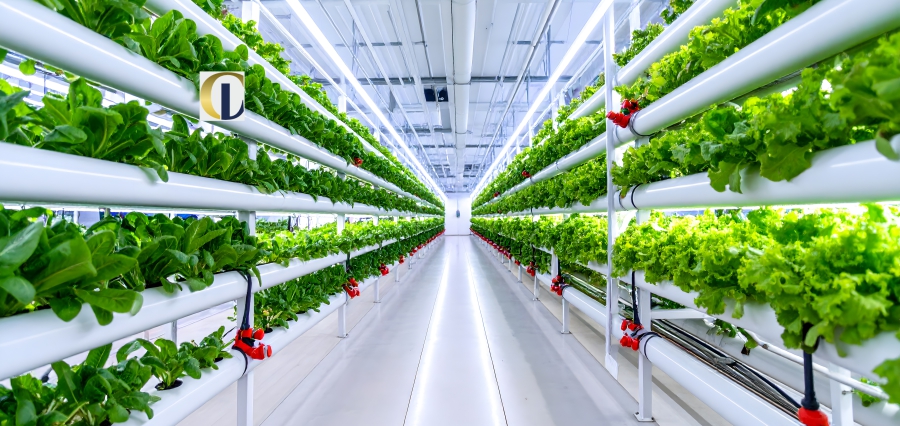Systematic Production
Agriculture has contributed towards India’s economic, cultural, and social identity for centuries. Even now, despite industrialisation and growth of service sector at very rapid pace, agriculture continues to contribute towards livelihood of almost half of the country’s working population. The sector remains an important source of food security, rural employment, and foreign exchange earnings. Indian agriculture is, however, plagued by issues of traditional farm fragmentation, soil fertility loss, rain dependence on the monsoon, price volatility of the market, and the impact of climatic change. Technology-driven solutions have become the favorites over the past few years to solve these problems. Of these, smart farming has come to the forefront as a game-changer that has the potential to revolutionize the face of Indian agriculture. With the process of integrating digital networks, computer processing of data, mechanized hardware, and accurate resource management techniques, smart farming is a new way of sustainability and efficiency in the progressing industry.
Smart farming is mainly the use of technology like the Internet of Things (IoT), drones, artificial intelligence (AI), big data analysis, and satellite-based remote sensing in agriculture. Precision, efficiency, and sustainability are given precedence. For example, IoT-based sensors track soil moisture, nutrient, and weather in real time, allowing the farmers to receive information of how much water or fertilizer to give the crops and when. Similarly, drones are employed to spray pesticides evenly and check crop health across vast areas of farm land, lessening reliance on man power. Such cost-minimizing technology practices lower input cost as well as enhance output, thereby opening doors to enhanced profitability for agriculturists. At the national level, smart farming is India shifting towards a data-driven, new-generation agricultural paradigm from traditional subsistence farming methods and can compete on a global level.
Smart agriculture has a great number of implications for yield, particularly in a nation where land ownership is in a state of constant deterioration. Because India has so many small and marginal farmers cultivating less than two hectares of land, the resources have to be utilized as extensively as possible. Traditional farming wastes inputs in the form of indiscriminate watering, overuse of fertilizers, and absence of accurate knowledge of pest attacks. This is counteracted by smart farming, where this inefficiency can be eliminated through the use of precise levels of water and fertilizers where required. Precision delivery ensures better yields on precious land, an aspect that makes farmers capable of making their investment worthwhile even with fragmented farms. Punjab and Haryana, whose water is fast becoming a serious problem after decades of excess irrigation, already witness precision irrigation systems supported by intelligent technology saving huge water quantities while upholding or even improving productivity.
Linkages to the market are also a driver of change for smart farming. Farmers in the past have had poor access to open markets, exploitation by middlemen, and no timely prices. Electronic platforms with electronic connections and AI actually fill this gap at the moment by connecting farmers with consumers directly, offering real-time prices, and allowing electronic payment. Farming community-based mobile apps not only limit the middlemen but also enable improved price discovery. Used on value chains of fruits, vegetables, crops, and animals, such solutions can potentially render farmers’ incomes multiplier in impact. Also, rural India’s exposure to e-commerce giants and agri-startups also creates new opportunity where intelligent farming doesn’t just stop at production but even more intelligent marketing strategies.
Smart farming is one of the greatest advantages in climate resilience. Indian farmers are very vulnerable to erratic monsoons, floods, droughts, and sudden infestations of pests. The traditional methods leave little avenue to reverse these losses, leading to crop destruction and debt accumulation. More climate change leaves adaptation the only choice. Smart technologies offer farmers weather forecasting and warning systems, which will alert farmers before approaching adverse conditions. Crop model software also assists farmers in choosing the best variety for anticipated weather conditions. All go towards making agriculture production less guesswork dependent and more resilient to variability. Where there are periodic droughts as in regions of Maharashtra, smart irrigation technologies are already helping farmers stabilize farm production and hence food security in such regions is less risky and distress migration fewer. The contribution of government policy in propelling smart farming cannot be exaggerated.
The Indian government has taken the first step towards adopting digital technologies in agriculture through initiatives like the promotion of soil health cards, creation of digital platforms like e-NAM (National Agriculture Market), and facilitating the use of drones for crop surveillance. Apart from this, state governments in collaboration with private sector companies and research institutions are introducing pilot projects in various regions of the country. These pilot examples are inspiration stories making people aware and acceptable to the farmers, resulting in large-scale adoption. The digital India program and initiative of taking internet to rural India are constructing infrastructure backbones for the implementation of smart farming technologies. By merging agriculture and digitalization, the government is placing Indian farmers in the front foot to succeed in the knowledge economy. Another key parameter of such change is youth participation.
Most rural-origin youth hitherto have been against following agriculture due to its nature of being highly labor-intensive, thin-margin of profit, and dependent on uncertain yields. But a blend of high-tech strategies and entrepreneurial opportunities with agri-startups is transforming such an outlook. Young entrepreneurs are setting up businesses offering drone services, sensor-based irrigation tools, or web portals to manage farm inputs. Others are entering organic farming systems because of intelligent farming systems to benefit from expanding urban food consumption for safe and quality produce.,. This shift is significant because, apart from bringing back the interest of agriculture, it also enables modern knowledge systems to align with traditional wisdom, thus facilitating Indian agriculture in the future. The opportunities for women farmers are even higher in the case of smart farming.





